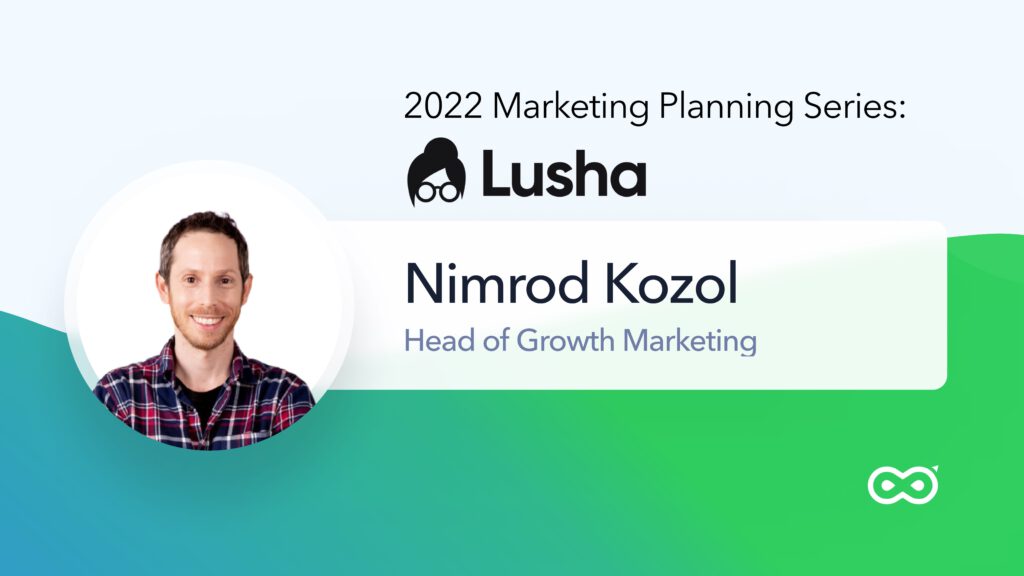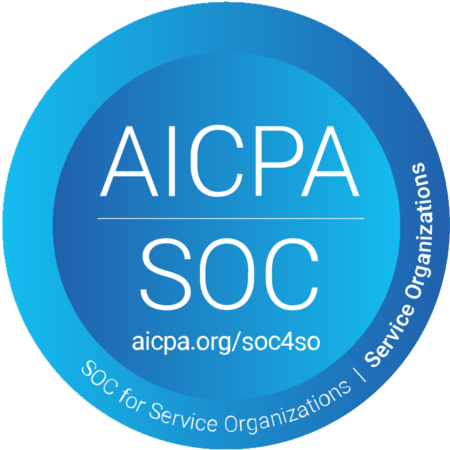Today we’ll be speaking with Nimrod Kozol, Head of Growth Marketing at Lusha.
Lusha offers B2B sales professionals a prospecting platform, web extension and APIs to identify, engage and close prospects. The company was founded in 2018 and today has a customer base of over 670,000 sales professionals and 223,000 sales organisations. Some of their big customers include Zendesk, Google, Dropbox and Uber.
Since joining Lusha in 2020, Nimrod has scaled paid acquisition from a $5K monthly budget to over $1M, in just one year.
Nimrod discusses his planning process, sales and marketing alignment and how he measures ROI in this talk. Here are some key takeaways from the interview:
- Lusha’s planning process. Split planning into two factors – creating more traffic and improving the conversion rate.
- Sales and Marketing Alignment. Create and use shared dashboards so that everybody has a single source of truth.
- How do you use shared KPIs? You may not optimise for certain SQLs or PQLs but you need to track them. Your main KPI is still going to be revenue.
- Accounting for a long sales cycle. Check the ROI numbers frequently to stay on top of the situation. Communicate regularly with other departments to understand what’s happening in the pipeline.
- How do you measure current ROI? Look at paid and organic traffic holistically. One often feeds off of the other. Even if you can’t measure something, aim to build trust with your audience in the long term and it will definitely help in the long run.
Lusha’s planning process
So you caught me right in the middle of it. I manage everything that has to do with the top of the funnel, i.e, acquisition both paid and organic.
From my point of view it’s looking at two key factors.
Traffic
One is how do I create more traffic.
- How do I create better ads?
- What about better marketing?
- What’s the process to find new platforms to advertise on? Or which platforms haven’t we utilised enough?
Conversion rate
And the second is working on the Conversion Rate. This factor includes several responsibilities:
- Ceate more juice from the current traffic
- Make Google search/Facebook better
- Invest in our website
- Create content that converts better
- Create messaging that works better
- Optimise the user journey and our website and landing page
I think for us, one of the biggest struggles of the upcoming year is going to be mobile because obviously we’re a tool for salespeople, for our peers, and they obviously use the desktop for Lucia. So a lot of our planning is really trying to, to first of all, tackle issues like mobile based traffic.
And at the same time, really optimise our current efforts where we can do it. It’s also about getting enough resources because obviously a lot of the things that we want to do are dependent on time. It needs manpower and it’s dependent on stakeholders helping us.
Sales and marketing alignment
We’re working on creating shared dashboards. I think that’s very important because what happens is that marketing is working on one aspect while sales is working on a different one. There has to be a shared dashboard. There has to be one source of truth, which everybody’s looking at. As the Sales team works on Salesforce, I work on Google ads, we’re not always speaking the same language. So one source of truth, one dashboard, created by the BI / BA is definitely a great start for everybody.
Problem of attribution
Another thing is obviously in terms of attribution. Trying to connect between the two to understand really what campaigns, what activity, from whether it’s paid or organic, actually has an impact on sales.
Attribution is very difficult, obviously it’s very hard to pinpoint.
You never know if a specific YouTube ad, might create a view that 60 days later, helps close that sale. But it’s a start. It’s the shared reporting. It’s the weeklies or biweeklies that we have which allow us to be in sync.
How much are we spending?
How many registrations are we getting?
And also understanding from them because at the end, if I’m spending a million plus dollars, I need to know at that month – am I going to expect a return on that? Because usually it takes around 30 days for a sale to get closed.
It’s a lot about the communications, a one source of truth and attribution.
What are your shared KPIs?
So basically our shared KPIs are, I have to create an X amount of demos, X amount of PQLS or SQLs. And obviously it’s not necessarily what I optimise towards, because like I said, we’re self-service.
At the end, the user signs up and then can use the product. And then from there perhaps become a lead in the demo. But it’s still something that we look at even though it’s not necessarily my main KPI. In the end, I need to support an office in the US with that – about 20 salespeople. So if I don’t bring enough volume from the US and then at the end, there’s not going to be enough inbound leads.
Accounting for a long sales cycle.
I wouldn’t say that I deal with it on a daily basis. But it’s more like you check every two weeks because I need to know what I am creating.
So let’s say, I’m increasing the number of signups from the US.
Is there actually an impact on leads? It’s not necessarily something that I’ll see on a day-to-day basis, but we do need to check, every week, every two weeks.
Especially since when I’m looking at the beginning of the month, it always seems like I’m not going to see a return on the money. Obviously we start with a very low ROI but if you monitor the situation and also you’re in contact with other departments really to understand what’s happening in the pipeline, then that makes you usually a lot more comfortable as the month goes on. There’s probably enough juice in the pipeline for closed deals later on in the month or even months.
That will allow you to continue with the pace because we’re not stopping. We’re not at the same pace. We’re actually always increasing and that can only sustain itself if we do see sales from the enterprise.
How do you measure the current ROI?
So first of all, I look at a blended model. I don’t separate between paid and organic. It’s very clear because we can see it. Once we increased our paid campaigns, there was an impact on organics. For instance, we spent a lot of money on YouTube. We saw like a 30-40% increase in brand awareness. And in the US we saw more searches.
So you can’t disconnect between the two. And at the end we obviously use a lot of Google analytics. There is a column that I like, which is a page value. It helps you to understand how a specific page helps you in getting users to convert.
We don’t look at it all the time, but we try to identify the pages that seem to have a value and we can try to improve. And we look over time.
- Did we get more traffic to that page?
- Was it more appealing?
- Did it help us to increase the page value?
- Is it assisting more in creating conversions?
Obviously, you’re always going to have places like the blog, which just generate traffic and not many conversions. For instance, we just updated a page on the website, which is about our data. Now we’re a data company and prior to this, that page wasn’t good. It didn’t create trust.
Help in the long term
Now, is it going to help convert? I’m not sure we’re necessarily going to see that page value increase. When you create a page that’s more transparent about who you are, what your services are, that’s going to help create trust. And eventually that will help you later on. Even if that doesn’t create a conversion at that same second, it will definitely help you later on, with SEO.
If you’re considered a topical expert by Google that creates trust. That creates transparency, that helps your brand. You can’t always calculate the effect of these things, but I’m a true believer that this is something that you’ll see later on. You’ll see the effect of how you did a lot of small things.
Conclusion
Lusha is a perfect example of a SaaS company that knows how to take advantage of a certain need in the market, and use Product Lead Growth strategies to produce exponential growth.
Several tactics raised in the interview can really help marketing leaders in similar hypergrowth companies. For example, looking at paid and organic traffic as linked components. In addition, a shared dashboard is a quick solution which can go a long way towards dealing with sales and marketing misalignment.



